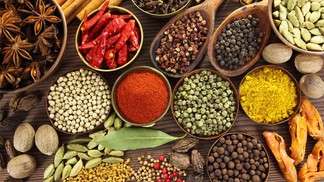Social networks to drive economic forecasts

Should one produce wheat or corn this year? When is the best time to put products on the market? In emerging countries in particular, producers are exposed to food price fluctuations. Can social networks be used as a means of anticipating highs and lows? A group of students enrolled in the Master's degree program in information technology have taken a closer look at this question.
In order to plan their work, farmers always keep an eye on weather forecasts. In a few years, will they be as hooked on economic forecasts? Fabian Brix, a student enrolled in the Master's degree program in information technology, thinks that this is exactly what will happen. He has been working on a forecasting system based on analysis of data gleaned from social networks.
As a member of MUN EPFL, an association modelled after the United Nations (UN), he became aware of the impact that volatility in the price of merchandise has on producers. This students association simulates the functioning of international organizations to prepare its members for international negotiations. When asked to choose a project for the course on Big Data (using computers to process massive quantities of data), he immediately thought of this problem and convinced his working group to focus on the issue. "Professor Christoph Koch encourages his students to establish their own research topic," recalls Fabian Brix.
"The aim was to use geolocalized tweets to monitor price fluctuations for agricultural goods, explains Fabian Brix. We decided to focus on India because this country maintains official statistics that enabled us to validate our findings." The working group comprised of Alexander John Busser, Anton Ovchinnikov, Ching-Chia Wang, Duy Nguyen, Fabian Brix, Gabriel Grill, Joseph Boyd and Stefan Mihaila set up a system, which they called Humanitas. This system allows them to monitor tweets and detect those containing information concerning food prices.
All in all, the exercise proved very instructive but not overly useful. "Twitter provides access to only 1% of all tweets. Moreover, the project covered only one semester, the time needed for design and development. That left us with only one week to gather data. Also, there was not enough usable data to draw conclusive findings." Nevertheless, the method exists and is so promising that the United Nations has even drafted its own report on the subject.
For the moment, the project is on standby. Who knows? Maybe one day farmers will be guided in their choice of crops or choose when to put their products on the market using data that will enable them to predict price fluctuations. "This type of economic intelligence tool is already used by large companies," points out Fabian Brix. This is why access to certain databases has become a veritable market. This system would allow more widespread access to such technology, particularly among farmers in emerging countries.
More information: The report is available online: www.unglobalpulse.org/nowcasting-food-prices
Provided by Ecole Polytechnique Federale de Lausanne


















